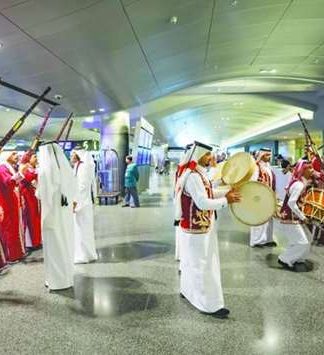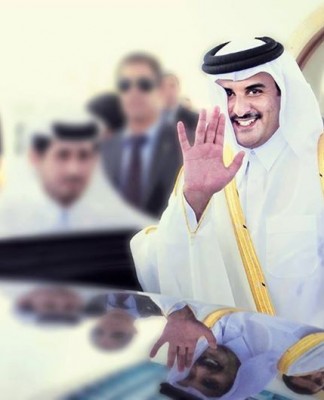/ Europe
WAR IN UKRAINE
‘Birds in a cage’? Logistical challenges on cards when Ukraine gets F-16s
Issued on: 19/05/2023 – 19:22
Modified: 19/05/2023 – 19:24
F 16 fighter jets takes part in the NATO Air Shielding exercise near the air base in Lask, central Poland on October 12, 2022.
F 16 fighter jets takes part in the NATO Air Shielding exercise near the air base in Lask, central Poland on October 12, 2022. © Radoslaw Jozwiak, AFP
Text by:
FRANCE 24
Follow
5 min
In a major U-turn, President Joe Biden said on Friday the US will back giving Ukraine advanced fighter jets including F-16s – days after Britain and the Netherlands promised an “international coalition” to send Kyiv the US-made jets it has long demanded. But analysts warn this will be an immense logistical challenge – from ensuring Ukraine has weapons to carry on the planes to ensuring their delivery does not escalate the conflict beyond Ukraine’s borders.
After months of Ukrainian demands for F-16s as Kyiv plans its counteroffensive against Russia, the US finally gave the green light as Biden attended the G7 summit in Japan – a move President Volodymyr Zelensky hailed as a “historic decision”.
Biden said the US “will support a joint effort with our allies and partners to train Ukrainian pilots on fourth-generation fighter aircraft, including F-16s, to further strengthen and improve the capabilities of the Ukrainian Air Force”, a senior White House official told AFP.
This marks a quite a U-turn from Washington’s refusals to give Ukraine F-16s. The Biden administration has feared that Kyiv could use the jets to strike targets on Russian soil, thereby dangerously escalating its conflict with a country boasting the world’s largest nuclear weapons arsenal.
But Ukraine did not let up its lobbying for F-16s, arguing that it needs them for defensive as well as offensive capacities – especially when it comes to controlling its air space to protecting civilians from Russian strikes.
“Giving Ukraine F-16s will deter Russia rather than ‘provoke’ it,” Ukrainian Defence Minister Dmytro Kuleba tweeted in April.
The dynamic changed on Tuesday when British Prime Minister Rishi Sunak and his Dutch counterpart Mark Rutte met in London and agreed to “work to build (an) international coalition to provide Ukraine with combat air capabilities, supporting with everything from training to procuring F16 jets”, as Downing Street put it.
Britain has a track record of pushing the envelope when it comes to supplying Ukraine with advanced weaponry, prompting the US to follow suit. After months of Ukrainian demands for Western tanks, London announced in January it would send Challengers to Ukraine, heralding a U-turn in Washington as the Biden administration changed its mind and agreed to send Abrams tanks.
The same month the Western allies shifted gears on tank deliveries, the F-16s’ manufacturer, US defence company Lockheed Martin, suggested supply constraints would not be a problem when it came to the fighter jets – saying it was ready to match increased demand.
Escalation fears
But the US has always been keen to balance full-throated support for Ukraine with prudence about escalation – and wariness about the risks is unlikely to go away after Biden’s U-turn.
“The problem revolves around the crossing of the Russian border. The purpose of combat aircraft is to bring the fight to the enemy. However, there is a political obstacle here,” said defence consultant Marc Chassillan.
At the same time, keeping the F-16s within Ukraine would be quite a constraint, Chassillan continued.
Ukrainian forces “would be making very limited use of this kind of weaponry [if they do] not cross the border with Russia. Flying F-16s only within Ukrainian airspace would be like putting birds in a cage”, he said.
Before Washington’s policy change was announced, The New York Times reported on Wednesday that four NATO members – the Netherlands, Denmark, Belgium and Norway –were ready to supply Kyiv with at least 125 combat-ready F-16s, according to British think tank the International Institute for Strategic Studies.
Other Western allies such as France and the UK have meanwhile offered to help train Ukrainian pilots.
All-purpose aircraft
Designed in the 1970s by General Dynamics, the F-16 Fighting Falcon is the world’s most widely used fighter jet. Some 4,500 have been manufactured and it remains one of the most exported models in recent years. It is currently in service in 25 countries.
The bestselling single-engine aircraft, a favourite among US allies due to its speed and flexibility, is 15 metres long with a wingspan of nearly 10 metres.
Over the years, the F-16 has nevertheless undergone several changes to its design since it was first created. Originally built for aerial combat, the fighter jet is now capable of doing almost everything from airspace defence to tactical bombing.
“Over time, it has become more versatile, up to the most modern versions such as the Block-52 that was recently sold to Poland. However, [when] F-16s are delivered to Ukraine, they will most certainly not be the latest versions but rather older versions from the Belgian, Dutch, Danish or Norwegian military reserves,” said Chassillan.
So far the Ukrainian air force has been relying on small numbers of ageing Soviet-era jets, namely MiG-29s and Su-27s.
Ukrainian forces currently operate 187 aircraft, of which 41 are fighter jets – ten times less than Russia – according to the military analysis website Global Firepower.
Costly logistics
Kyiv may not have full control of Ukraine’s airspace – but it has numerous anti-aircraft defence systems that deter Russian fighter jets from conducting operations beyond the front line.
But Ukraine has been rapidly using up its supplies of anti-aircraft weapons, Chassillan pointed out.
“Stocks of anti-aircraft missiles are beginning to run dangerously low because Ukraine is consuming so much of them. At some point, the F-16 could take over to make up for a temporary or local shortage. It’s an aircraft perfectly capable of shooting down a cruise missile,” said Chassillan.
Daily newsletter
Receive essential international news every morning
Subscribe
But this points to another challenge Ukraine and its allies will have to overcome – the running down of Western arms stockpiles.
“There is a whole range of equipment that comes with the aircraft – and as things stand there’s no guarantee it will be available,” said Chassillan.
On top of costly logistics, ground personnel along with pilots will also have to be trained.
“There’s also the problem of the weapons these planes would be carrying. Do Western allies have enough bombs, missiles and shells for the guns? [Current] stocks are not very high. The F-16s will have absolutely no value if they don’t have weapons to go with them,” said Chassillan.
This article has been translated from the original in French.






























